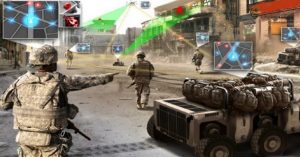
Shownotes
Welcome to Day 1473 of our Wisdom-Trek, and thank you for joining me.
This is Guthrie Chamberlain, Your Guide to Wisdom
AI, Robots, and Drones – Ask Gramps
Wisdom - the final frontier to true knowledge. Welcome to Wisdom-Trek! Where our mission is to create a legacy of wisdom, to seek out discernment and insights, to boldly grow where few have chosen to grow before. Hello, my friend, I am Guthrie Chamberlain, your captain on our journey to increase Wisdom and Create a Living Legacy. Thank you for joining us today as we explore wisdom on our 2nd millennium of podcasts. Today is Day 1473 of our Trek, and our focus on Fridays is the future technological and societal advances, so we call it Futuristic Fridays. My personality is one that has always been very future-oriented. Since my childhood, I have yearned for the exploration and discovery of new technologies and advancements for the future. I grew up with the original Star Trek series, and even today, as I am now on my 65th revolution around the sun, I still dream of traveling in space. Each week we will explore rapidly converging technologies and advancements, which will radically change our lives. At times, the topics may sound like something out of a science fiction novel, but each area that we explore is already well on its way of becoming a reality over the next couple of decades.
To keep with our theme of “Ask Gramps,” I will put our weekly topics in the form of a question to get us on track. So this week’s question is, Hey Gramps, how will some of these new technologies help us in search and rescue during a natural disaster or other crisis?
AI, Robots, and Drones
Last week we focused on transportation, flying cars, and the rise of ridesharing. This week we will learn how AI, Robots, and Drones can assist during natural or human-made disasters. I am using some of the information mentioned in Peter Diamandis’s blogs and book “The Future is Faster Than You Think.”
Between 2005 and 2020, natural disasters have claimed the lives of over 750,000 people and resulted in total damage of more than $2 trillion. During the past 50 years, the frequency of recorded natural disasters has surged nearly five-fold. Now I realize that this is somewhat attributed to enhanced global communication and better reporting, but it appears to be increasing rapidly
As wildfires grow increasingly untamable, wreaking havoc across regions like the Amazon and California, the need for rapid response and smart prevention is higher than ever.
We will be exploring how converging exponential technologies (AI, Robotics, Drones, Sensors, Networks) are transforming the future of disaster relief. — We can prevent a catastrophe in the first place and get help to victims during that first golden hour; wherein immediate relief can save lives.
- AI, predictive mapping, and the power of the crowd
- Next-gen robotics and swarm solutions
- Aerial drones and immediate aid supply
Artificial Intelligence and Predictive Mapping
When it comes to immediate and high-precision emergency response, data is gold. Already, the meteoric rise of space-based networks, stratosphere-hovering balloons, and 5G telecommunications infrastructure is in the process of connecting every individual on the planet.
Aside from democratizing the world’s information, however, this upsurge in connectivity will soon grant anyone the ability to broadcast detailed geotagged data, particularly those most vulnerable to natural disasters.
Armed with the power of data broadcasting and the force of crowd sharing, disaster victims now play a vital role in emergency response, turning a historically one-way blind rescue operation into a two-way dialogue between connected crowds and smart response systems.
With a skyrocketing abundance of data, however, comes a new paradigm: one in which we no longer face a scarcity of answers. Instead, it will be the quality of our questions that matters most. The abundance of data is where AI comes in, which is our mining mechanism.
In the case of emergency response, what if we could strategically map an almost endless amount of incoming data points? Or predict the dynamics of a flood and identify a tsunami’s most vulnerable targets before it even strikes? Or even amplify critical signals to trigger automatic aid by surveillance drones and immediately alert crowdsourced volunteers? Already, several key players are leveraging AI, crowdsourced intelligence, and cutting edge visualizations to optimize crisis response and multiply relief speeds.
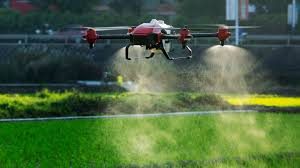 Here is one scenario called One Concern. Created at Stanford under the mentorship of leading AI expert Andrew Ng, One Concern leverages AI through analytical disaster assessment and calculated damage estimates. Partnering with the City of Los Angeles, San Francisco, and numerous cities in San Mateo County, the platform assigns verified, unique ‘digital fingerprints’ to every element in a city. With these digital fingerprints, they can build robust models of each system. One Concern’s AI platform can then monitor site-specific impacts of not only climate change but each individual natural disaster, from sweeping thermal shifts to seismic movement.
Here is one scenario called One Concern. Created at Stanford under the mentorship of leading AI expert Andrew Ng, One Concern leverages AI through analytical disaster assessment and calculated damage estimates. Partnering with the City of Los Angeles, San Francisco, and numerous cities in San Mateo County, the platform assigns verified, unique ‘digital fingerprints’ to every element in a city. With these digital fingerprints, they can build robust models of each system. One Concern’s AI platform can then monitor site-specific impacts of not only climate change but each individual natural disaster, from sweeping thermal shifts to seismic movement.
This data, combined with that of city infrastructure and former disasters, are then used to predict future damage under a range of disaster scenarios, informing prevention methods and structures in need of reinforcement.
Within just four years, One Concern can now make precise predictions with an 85 percent accuracy rate under 15 minutes. As IoT-connected devices and intelligent hardware continue to boom, a blooming trillion-sensor economy will only serve to amplify AI’s predictive capacity, offering us immediate, preventive strategies long before disaster strikes.
Let us drill down to forest fires in California, for instance. Utah University atmospheric scientist Adam Kochanski and a team of researchers are now refining a computer model with new data to predict how fires will spread and what weather events will follow in their wake.
Initiating a “prescribed fire,” which is a controlled fire typically intended for habitat restoration in forest regions — the team used numerous infrared camera-fitted drones, laser scanning, and sensors to collect data while Kochanski tested his predictive model’s forecasts.
While generated data is still being processed, the experiment is contributing to “coupled fire-atmosphere models,” which leverage data to determine how wildfires influence local weather conditions, and the interaction of the two. Yet already, Kochanski’s model proved remarkably predictive of the experimental fire’s actual behavior.
Paired with robust networks of sensors and autonomous drone fleets, computer models that incorporate weather conditions in AI forest fire mapping could help us to stem early fires before they gain momentum, saving forests, lives, and entire habitats.
As mobile connectivity and abundant sensors converge with AI-mined crowd intelligence, real-time awareness will only multiply in speed and scale.
Imagining the Future….
Within the next ten years, spatial web technology might even allow us to tap into mesh networks. Wireless mesh networks can connect entire cities via hundreds of dispersed nodes that communicate with each other and share a network connection non-hierarchically. In short, this means that individual mobile users can together establish a local mesh network using nothing but the computer power in their own devices. These devices can be smartphones, smartwatches, Wi-Fi networks, or any one of the thousands of 5-G sensors. Take this a step further, and a local population of strangers could collectively broadcast countless 360-degree feeds across a local mesh network without realizing that they are contributing help benefit others locally, or globally.
Imagine a scenario in which armed attacks break out across disjointed urban districts. Each cluster of eyewitnesses and at-risk civilians can be broadcasting an aggregate of 360-degree of videos and sound, all fed through photogrammetry AIs that build out a live hologram in real-time, giving family members and first responders complete information.
Another example could be a coastal community in the throes of torrential rainfall and failing infrastructure. Now empowered by a collective live feed from a myriad of sensors, verification of data reports takes a matter of seconds, and richly layered data can inform first responders and AI platforms with unbelievable accuracy and specificity of relief needs.
By linking all the right technological pieces, we might even see the rise of automated drone deliveries. Imagine: crowdsourced intelligence is first cross-referenced with sensor data and verified algorithmically. AI is then leveraged to determine the specific needs and degree of urgency at ultra-precise coordinates. Within minutes, once approved by personnel, swarm robots rush to collect the requisite supplies, equipping size-appropriate drones with the right aid for rapid-fire delivery.
Thinking through these scenarios brings us to a second critical convergence: robots and drones. While cutting-edge drone technology revolutionizes the way we deliver aid, new breakthroughs in AI-geared robotics are paving the way for superhuman emergency responses in some of today’s most dangerous environments. Let’s explore a few of the most disruptive examples that today are reaching the testing phase.
Autonomous Robots and Swarm Solutions
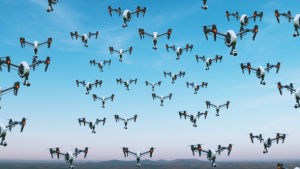 As hardware advancements converge with exploding AI capabilities, disaster relief robots are graduating from assistance roles to fully autonomous responders at a breakneck pace.
As hardware advancements converge with exploding AI capabilities, disaster relief robots are graduating from assistance roles to fully autonomous responders at a breakneck pace.
Created in MIT’s Biomimetic Robotics Lab, the Cheetah III (which looks like a headless dog) is but one of many robots that may form our first line of defense in everything from earthquake search-and-rescue missions to high-risk ops in dangerous radiation zones.
These robots are already capable of running at 6.4 meters or 21 feet per second. Cheetah III can even leap up to a height of 60 centimeters (2 feet) vertically and autonomously determining how to avoid obstacles and jump over hurdles as they arise.
Initially designed to perform spectral inspection tasks in hazardous settings (i.e., nuclear plants or chemical factories), the Cheetah’s various iterations have focused on increasing its payload capacity, range of motion, and even a gripping function with enhanced dexterity.
As explained by the Lab’s director and MIT Associate Professor Sangbae Kim, Cheetah III and future versions are aimed at saving lives in almost any environment. Examples are in a fire, contaminated areas, or high radiation situation, where it may be impossible for a person to go in. We can send in a Cheetah to check if people are inside, or to assess the situation.
The Cheetah III is just one example. In 2019 Tokyo’s Electric Power Company (TEPCO) put one of its own robots to the test. For the first time since Japan’s devastating 2011 tsunami, which led to three nuclear meltdowns in the nation’s Fukushima nuclear power plant, a robot has successfully examined the reactor’s fuel. There is no longer a need to risk human life. Broadcasting the process with its built-in camera, the robot was able to retrieve small chunks of radioactive fuel at five of the six test sites, offering tremendous promise for long-term plans to clean up the still-deadly interior.
Another example in Japan, Mitsubishi Heavy Industries (MHi), is even using robots to fight fires with full autonomy. In a remarkable new feat, MHi’s Water Cannon Bot can now put out blazes in difficult-to-access or highly dangerous fire sites. Delivering foam or water at 4,000 liters (1056 gallons) per minute and 1 megapascal (MPa) of pressure, the Cannon Bot, and its accompanying Hose Extension Bot even form part of a greater AI-geared system to conduct reconnaissance and surveillance on larger transport vehicles.
As wildfires grow ever more untamable, high-volume production of such bots could prove a real lifesaver. Paired with predictive AI forest fire mapping and autonomous hauling vehicles, not only will solutions like MHi’s Cannon Bot save numerous lives, but avoid population displacement and paralyzing damage to our natural environment before disaster has the chance to spread. We could certainly use this in California and Arizona today. We will reach large quantity production of these units within a few years. Even in cases where emergency shelter is needed, groundbreaking (literally) robotics solutions will soon be available to rescue humans.
Let’s move onto a different example. After multiple iterations by Fastbrick Robotics, the Hadrian X end-to-end bricklaying robot can now autonomously build a fully livable, 180-square meter (2000 square foot) home in under three days. By using a laser-guided robotic attachment, the all-in-one brick-loaded truck simply drives to a construction site and directs blocks through its robotic arm in accordance with a 3D model.
Meeting verified building standards, Hadrian and similar solutions hold enormous promise in the long-term, deployable across post-conflict refugee sites and regions recovering from natural catastrophes.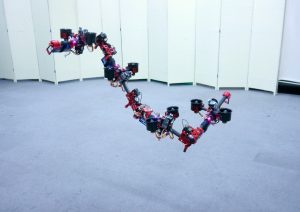 Think about this idea. What if we need to build emergency shelters from local soil at hand? Marking an extraordinary convergence between robotics and 3D printing, the Institute of Advanced Architecture of Catalonia (IAAC) is already working on a solution.
Think about this idea. What if we need to build emergency shelters from local soil at hand? Marking an extraordinary convergence between robotics and 3D printing, the Institute of Advanced Architecture of Catalonia (IAAC) is already working on a solution.
In a significant feat for low-cost construction in remote zones, IAAC has found a way to convert almost any soil into a building material with three times the tensile strength of industrial clay. Offering myriad benefits, including natural insulation, low GHG emissions, fire protection, air circulation, and thermal mediation, IAAC’s new 3D printed native soil can build houses on-site for as little as $1,000. Technology like this has the potential for so many impoverished areas around the globe.
While cutting edge robotics unlock extraordinary new frontiers for low-cost, large-scale emergency construction, novel hardware, and computing breakthroughs are also enabling robotic scale at the other extreme of the spectrum tiny and even microscopic robots.
Inspired by biological phenomena, robotics specialists across the U.S. have begun to pilot tiny robotic prototypes for locating trapped individuals and assessing infrastructural damage.
Tiny RoboBees developed at Harvard are small bots that use electrostatic adhesion to ‘perch’ on walls and even ceilings, evaluating structural damage in the aftermath of an earthquake.
Another example is Carnegie Mellon’s prototyped Snakebot, capable of navigating through entry points that would otherwise be entirely inaccessible for human responders. Driven by AI, the Snakebot can maneuver through even the most densely packed rubble to locate survivors, using cameras and microphones for communication.
That brings me to another scenario that requires fast-paced reconnaissance in inaccessible regions. We have a bot for that also, flying miniature robot swarm drones.
Next-Generation Drones for Instantaneous Relief Supplies
Particularly in the case of wildfires and conflict zones, autonomous drone technology is fundamentally revolutionizing the way we identify survivors in need and automate relief supply.
Not only are drones enabling high-resolution imagery for real-time mapping and damage assessment, but preliminary research shows that UAVs far outpace ground-based rescue teams in locating isolated survivors.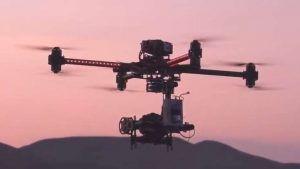 As presented by a team of electrical engineers from the University of Science and Technology of China, drones could even build out a mobile wireless broadband network in record time using a “drone-assisted multi-hop device-to-device” program.
As presented by a team of electrical engineers from the University of Science and Technology of China, drones could even build out a mobile wireless broadband network in record time using a “drone-assisted multi-hop device-to-device” program.
As shown during Houston’s Hurricane Harvey, drones can provide scores of predictive intel on everything from future flooding to damage estimates.
Among numerous others, a team led by Texas A&M computer science professor and director of the university’s Center for Robot-Assisted Search and Rescue Dr. Robin Murphy flew a total of 119 drone missions over the city, from small-scale quadcopters to military-grade unmanned planes. Not only were these critical for monitoring levee infrastructure, but also for identifying those left behind by human rescue teams.
Beyond surveillance, UAVs have begun to provide lifesaving supplies across some of the most remote regions of the globe. One of the most inspiring examples to date is Zipline. Created in 2014, Zipline has completed 12,352 lifesaving drone deliveries as of 2019. While drones are designed, tested, and assembled in California, Zipline primarily operates in Rwanda and Tanzania, hiring local operators and providing over 11 million people with instant access to medical supplies.
Providing everything from vaccines and HIV medications to blood and IV tubes, Zipline’s drones far outpace ground-based supply transport, in many instances providing life-critical blood cells, plasma, and platelets in under an hour. It will not surprise me if this type of technology will be used in the delivery of the anticipated Covid-19 vaccine.
Drone technology is even beginning to transcend the limited scale of medical supplies and food. Developing its drones under contracts with DARPA and the U.S. Marine Corps, Logistic Gliders, Inc. has built autonomously navigating drones capable of carrying 1,800 pounds of cargo over unprecedented long distances. These drones are constructed from plywood. Logistic’s gliders are projected to cost as little as a few hundred dollars each, making them perfect candidates for high-volume, remote aid deliveries, whether navigated by a pilot or self-flown in accordance with real-time disaster zone mapping.
As hardware continues to advance, autonomous drone technology coupled with real-time mapping algorithms pose no end of abundant opportunities for aid supply, disaster monitoring, and richly layered intel previously unimaginable for humanitarian relief.
Concluding Thoughts
Perhaps one of the most consequential and impactful applications of converging technologies is their transformation of disaster relief methods. While AI-driven intel platforms
